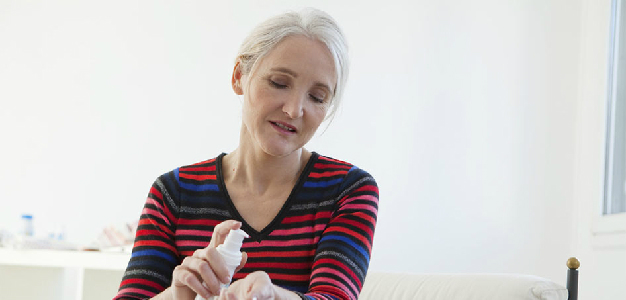Mainstream medicine advises against bioidentical hormones, but for some of us they could still be a useful part of our healthy ageing kit.
I’ve been using a bioidentical hormone cream for nearly five years.
It was never part of my plan. In my early 30s I’d been involved in research with women who used conventional HRT and every one of them had breast lumps. I was clear that was a path I wasn’t interested in going down.
Fast forward 25 years to the winter of 2014 when I was about to turn 57. One day I leaned to the side to stretch, as I’d done probably hundreds of times before, and I felt a small ping in the outside of my hip. It was like a tiny rubber band snapping.
A scan I had done a few weeks later showed a small tear in a tendon. It was healing so it wasn’t a big deal, but it bothered me.
If I could tear a tendon that easily in my 50s, it didn’t augur well for my old age. And if that was happening to a tendon, what state were my bones in?
I knew my bone density was low, and this episode left me wondering whether a healthy lifestyle would be enough to preserve my muscle and bone and enable me to be as active as I want to be in future.
I decided to talk to someone about bioidentical hormone cream. I should point out that using hormone therapy to help prevent osteoporosis isn’t standard practice. These days hormones are recommended only for the treatment of menopausal symptoms.
Although a light hormonal top-up helps to avoid potential bone loss, it’s argued that the risks outweigh the benefits. The risks are thought to include cardiovascular disease and breast cancer, though the research that led to those conclusions didn’t use bioidentical cream.
It’s a grey area, but the risk seems to be tiny in my case. If I had issues related to either of those diseases I probably wouldn’t chance it.
The mainstream option for someone like me would be drugs such as Fosamax or Prolia, but at this point I prefer the hormonal route.
Unlike tablets, creams enter the blood stream without having to be metabolised by the liver, which is safer. And bioidentical products are designed to match the hormones in one’s own body.
The advocates of conventional hormone therapy now make the same case about it, and they may be right. After all, no hormone therapy is particularly ‘natural’ — it’s all made in a lab.
I had a fair idea of which doctors in Brisbane prescribed bioidenticals and most charged what I thought were exorbitant fees. So I made an appointment with the only one I knew of who charged a regular GP fee.
Almost five years down the track I’m satisfied with that decision, but I acknowledge that it’s not for everyone.
First, you have to be OK with being outside ‘the system’. The mainstream view is that bioidenticals are unregulated and therefore dangerous. If you’re diligent and work with good practitioner I don’t think that’s the case. But you have to put up with that point of view.
Second, it’s not exactly convenient.
There are compounding pharmacies everywhere these days, but I went to three before I found somewhere that seemed to provide a consistent product.
It took a couple of years before we (i.e. the doctor and me) got my prescription vaguely right. Of course, that’s harder if the product isn’t reliable.
There’s plenty of trial and error, and it takes regular monitoring. About every six months I check my estrogen and testosterone levels with a blood test and use a saliva test for the progesterone.
The blood and saliva tests aren’t the only checks. Estrogen’s a growth-stimulating hormone, so each year I also have a breast and pelvic ultrasound.
To add to the inconvenience, this particular doctor is on the other side of town, and since he’s not my regular GP, I now have two GPs who want copies of key tests e.g. for cervical screening, bone density, cholesterol and so on.
In fairness, it’s all easier now than it was, and everything I’ve described is spread over a 12-month period.
The third hurdle is the cost.
The cream costs about $90 every three months now that I have all three hormones in the one cream. It’s dearer if you need separate creams, which I did while we were sorting out doses.
Plus there’s the cost of tests and GP appointments. I’m certainly grateful that I bypassed the doctors who charge the steep fees.
After all that, is it making a difference?
I’d say so, though it’s hard to quantify. I haven’t had that kind of injury again, and my bone density is holding. Bone loss is a big risk in the first five years after menopause and I’ve navigated that pretty well.
But the hormone cream isn’t the only precaution I take. I also do regular resistance exercise and take supplements to support my bones.
While conventional hormone therapy isn’t recommended beyond age 60, doctors who prescribe bioidenticals believe they can be used to preserve tissue quality for the rest of one’s life.
At this stage I’m not thinking about forever, but so far, so good.

